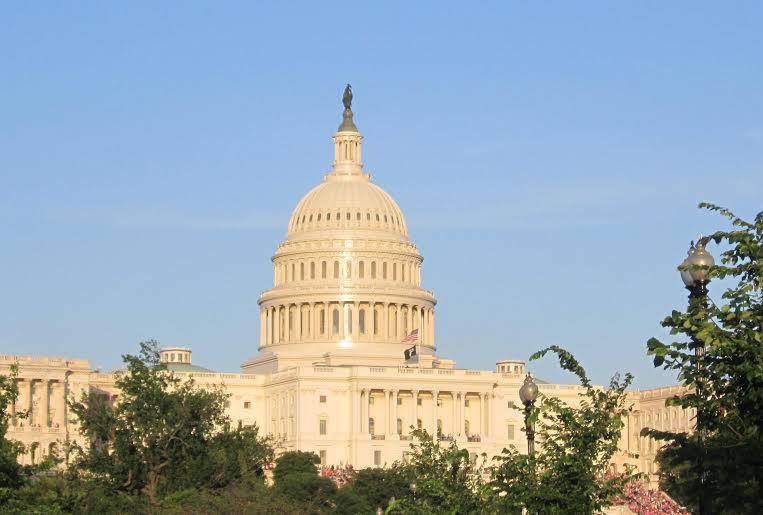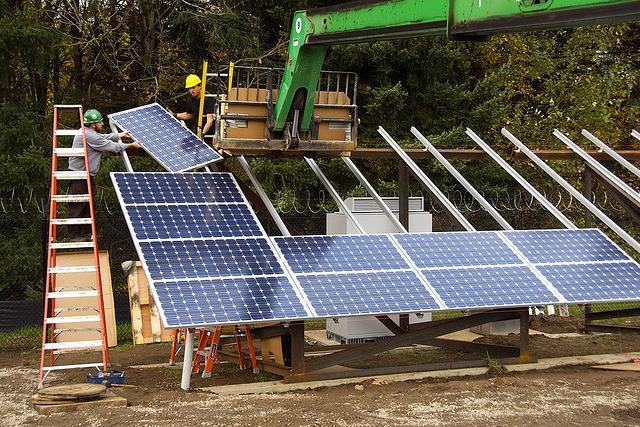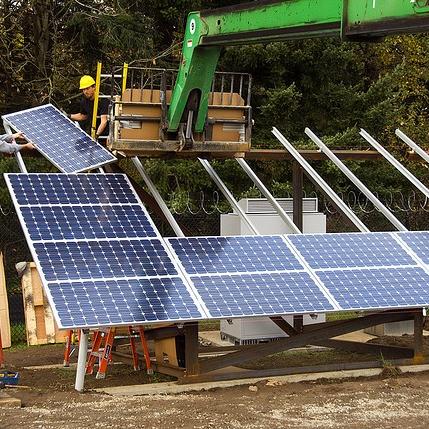Financial Inclusion: The Most Important Question for Business Leaders


Editor's Note: This post was originally published on Unreasonable.is. By Ross Baird
The philosopher Tony Judt, while dying of ALS three years ago, wrote a final essay, "Ill Fares the Land." Below is its opening paragraph:
"Something is profoundly wrong with the way we live today. For thirty years we have made a virtue out of the pursuit of material self-interest: indeed, this very pursuit now constitutes whatever remains of our sense of collective purpose. We know what things cost but have no idea what they are worth. We no longer ask of a judicial ruling or a legislative act: is it good? Is it fair? Is it just? Is it right? Will it help bring about a better society or a better world? Those used to be the political questions, even if they invited no easy answers. We must learn once again to pose them."
Judt’s message: As a society, we focus nearly all of our time, attention and resources on maximizing wealth for shareholders in private companies. We know what things cost, but not what they are worth.
A close friend and collaborator once showed me a New Yorker cartoon that sums up the consequences of this scenario: a series of kids gathered in a post-apocalyptic landscape around a pyre of burning trash, with an older man in a dirty suit saying: “Yes, the planet got destroyed. But for a brief moment in time, we created wonderful value for shareholders.”
To “maximize shareholder value” is required by law in many states as a part of any investor or company manager’s fiduciary duty. The term “fiduciary” derives from the Latin “faith” — the faith an asset owner has in its stewards. In society, our fiduciaries have incredibly high standards for how the resources perform on a cost-benefit analysis — and they should. Investors managing pension fund assets are charged with the retirement accounts of firefighters and teachers, and public company CEOs recognize that the net worth of millions of people potentially depend on the stock price.
Yet, the New Yorker cartoon shows that if business leaders are not simultaneously fiduciaries for society at large, the world faces grave consequences. It’s easy to read a stock ticker; how do we begin to discuss what things are worth?
The fallacy of “two pocket” thinking
Many business leaders would suggest what we call “two pocket” thinking: Your business career ought to be dedicated to making as much money as possible, in one pocket, so that, as a philanthropist, you can give all your assets away. Philanthropy is a tremendous force for good: Millions of generous people support hundreds of thousands of wonderful philanthropic causes worldwide.
Yet “two pocket thinking” is a losing proposition for society if you care about its future. The sum of all the charitable giving in the world, added up, more than 4,000 times. For the future to have a chance, business leaders need to integrate shareholder value with the impact their business — their day job, where the vast majority of all our assets, time, and attention are focused — has on society.
The tale of the first consumer bank: Self-regulated business leadership
This past fall, our firm, Village Capital, launched an initiative called Edupreneurs, a partnership with the Pearson Affordable Learning Fund and the Omidyar Network to support startup businesses that increase learning outcomes for underserved students in Africa. Sir Michael Barber, the chief education advisor to Pearson, spoke to participating entrepreneurs about the role of balancing ethics and entrepreneurship: an important topic for anyone in for-profit education to address.
Sir Michael tells the story of the founding of one of the earliest banks in London as perhaps one of the first financial inclusion initiatives. This bank, which has become one of the most prominent names worldwide, was founded by Quakers several hundred years ago as an alternative to moneylenders of the time — who were extractive and took advantage of the poor (think Ebenezer Scrooge, pre-three Christmas spirits). No one told these founders that they had to set up a bank, available to the mass public, at reasonable interest rates — they did it because it was the right thing to do. And helped create a market revolution, to where most people can get bank accounts today.
Ethics in financial inclusion
At Village Capital, we regularly wrestle this tension through the eyes of entrepreneurs. This spring, we are launching three programs in Mexico, the U.S. and East Africa, each supporting entrepreneurs in that region providing access to financial services to underserved populations.
The need is clear: According to the Financial Diaries, a national study of U.S. households, nearly 100 million Americans rely on informal financial services. In practice: You’re a freelance accountant in Ohio, making $45,000 per year — the median income in the state — nearly all of it between January and April, but your baby daughter gets a big medical bill in November. Your credit score is too low for a formal loan, so you borrow $3,000 from a payday lender at 40 percent interest, knowing that you’ll have the cash to repay the amount in January. Over a lifetime, the average American who uses informal financial services pays $40,000 — nearly one year’s salary for the median Ohio household — in fees alone to informal financial institutions.
Entrepreneurs can solve this problem. eMoneyPool, a company we support at Village Capital, provides online management of “money pools,” informal lending circles that 30 million Americans use each year. If you’re a member of a money pool and your daughter gets sick, you can borrow money from your friends through a third-party managed system — and when you repay it, you can improve your credit score, so next time you can get a fair-interest rate loan from a bank.
Earlier this year one close colleague, asked a question: “What’s the difference, though, between entrepreneurs who create value for underserved customers and exploitative loan sharks?” This was a great question, and it isn’t asked nearly often enough. There’s no simple “cost” answer or interest rate, I replied — instead, we rely on the ethics of the management team to solve a problem in a way that creates value for customers that they can reasonably pay for. We invest in leaders and businesses who have net positive worth to society.
I had the privilege of spending time with another pioneer in microfinance earlier this spring who has invested in literally dozens of enterprises extending access to financial services to underserved customers. I asked him a version of this question, and he said, right away: “The management. We trust the values and motivations of the management team to come up with the right answer to this question.”
Everyone in business has a fiduciary duty — to respect both the capital invested in your business or fund, create financial value for your supporters, and take care of your and your coworkers’ families. Yet we also have a fiduciary duty to our customers, society and generations to come.
When making difficult decisions, we can’t build formulas or metrics that get us to the right answer. But having difficult and important conversations about what things are worth, and not just what they cost — what Tony Judt says used to be the important questions in society — ought to return top of mind again.
Ross Baird is the Executive Director of Village Capital and has worked with over 350 entrepreneurs in Village Capital cohorts using a pioneering peer investment model. Before launching Village Capital, he was at First Light Ventures and as an entrepreneur with four start-up ventures.
Has China Reached Peak Coal?


Last fall, China made a historic climate agreement with the U.S., committing to reach peak carbon by 2030 and peak coal by 2020. And now it appears that the world’s top carbon emitter is starting to make good on its promise to cut greenhouse gas emissions and scale back on its reliance on dirty sources of energy.
According to energy data released by the Chinese government last week, the country’s consumption of coal fell by 2.9 percent in 2014 – the first dip in 14 years, the Natural Resources Defense Council (NRDC) reports. This drop in coal consumption has also led to the first decline in China’s carbon emissions this century – 0.70 percent – estimates Glen Peters, senior research fellow at the Center for International Climate and Environmental Research in Norway.
While the reductions in coal consumption and carbon emissions are modest, they are significant. Slower growth in China’s industrial sector was partly responsible for the decrease in demand for coal, but the government’s motivation to finally take action on pollution and carbon emissions also played a role, the Telegraph reports. The newly-released energy statistics may even point to China reaching peak coal now – a few years earlier than it pledged to – and shifting toward an energy mix with more natural gas and renewables, the publication went to say.
In a similar vein, Melanie Hart, director for China policy at the Center for American Progress, told Think Progress that last year’s decline in coal use indicates that the country is on track to reach peak coal use by 2020, if not earlier. Most emissions models suggest that China’s carbon emissions will peak approximately after coal does, Hart said.
Indeed, when Chinese president Xi Jinping announced his commitment in November, he said, “China intends to achieve the peaking of CO2 emissions around 2030 and to make best efforts to peak early.” This language left the door open for Chinese leaders to cut emissions more aggressively if the economics allowed, Hart said, and the new energy data points to this possibility, since slashing coal use is key to reducing China’s carbon footprint.
China has been making great strides towards cutting its pollution and greenhouse gas emissions in recent years, according to the NRDC. In 2013, the country adopted an air pollution control action plan that concentrates on reducing coal consumption in the three most polluted regions around Beijing, Shanghai and Guangzhou. While some cities are beginning to enjoy better air quality, there is still much room for improvement: The air quality in 66 of China’s 74 major cities failed to meet basic standards last year. The NRDC predicts that pressure will continue to mount on the Chinese government to address its troubling air pollution problem – which means finding alternatives to coal.
China also set a goal to source 15 percent of its energy from renewables by 2015 -- a goal it's well on its way to meeting, the NRDC reported. China not only led the world in renewable energy investment in 2014 – with a record $89.5 billion in funding – but the country also led the world in solar and wind capacity installed last year – 10.6 gigawatts and 96 gigawatts, respectively. Ironically enough, wind is now the second-largest source of electricity in Shanxi Province, the longtime center of China’s coal industry – and one of the country’s the most polluted areas.
China has also made energy efficiency a top priority, the NRDC said, shutting down highly-polluting, inefficient factories including 570 million metric tons of cement and 75 million metric tons of steel capacity in the last four years.
China’s new energy statistics and its recent work to address pollution and climate change runs counter to Republican criticism of the strength of China’s climate commitments and their justification of allowing the U.S. to drag its feet on climate action, too. The world will be waiting to see if China adopts more aggressive goals or announces further progress at the next United Nations’ climate conference in Paris this summer.
Image credit: Flickr/Jonathan Kos-Read
Passionate about both writing and sustainability, Alexis Petru is freelance journalist and communications consultant based in the San Francisco Bay Area whose work has appeared on Earth911, Huffington Post and Patch.com. Prior to working as a writer, she coordinated environmental programs for Bay Area cities and counties. Connect with Alexis on Twitter at @alexispetru
Earth Balance Switches to Sustainable Palm Oil


If you are regular shopper at Trader Joe’s or Whole Foods, chances are you have come across Earth Balance products. Its variety of mayos, spreads, nut butters and snacks are all vegan and, according to the company, contain heart-smart oils. And, like many companies, Earth Balance has long refused to use hydrogenated oils and now sources palm oil instead.
The increased global demand for palm oil, however, has caused its own set of environmental and social problems, from land rights to wildlife habitat destruction to increased carbon emissions. To that end, Earth Balance is in the midst of revamping its supply chain and says its goal is to source only sustainable palm oil by the end of this year.
Earth Balance has decided to join other companies in partnering with the Roundtable on Sustainable Palm Oil (RSPO) and says it is committed to the Palm Oil Innovation Group (POIG) in order to cease the links between palm oil cultivation, deforestation and human rights violations. In an email exchange with Adriane Little, a director at Earth Balance, we discussed the company’s shift toward sustainable palm oil.
The company currently sources from two palm oil suppliers, from which it has purchased this raw material for three years. A supplier in Colombia provides about 40 percent of Earth Balance’s palm oil, which the company says is 100 percent organic; the rest is sourced from across Southeast Asia. Previously Earth Balance worked with suppliers in peninsular Malaysia. According to Little, the company’s suppliers have already been at the forefront of responsible palm oil production, and Earth Balance will take the relationship a step further by working with RSPO and POIG on third-party auditing and verification. “Once we are confident every checkpoint has been met or exceeded, we’ll be excited to announce that our suppliers are 100 percent in compliance,” Little said.
Of course, the question often comes up: Why use palm oil in the first place? Little explained that Earth Balance receives a bevy of questions from customers every month, many of whom suggest the company just removes palm oil, period.
As is the case with many food companies, Earth Balance has been the target of its share of protests and petitions. Like many of these supply chain dilemmas, the answer is finding the best possible, or least terrible, option. American consumers have long been leery of hydrogenated oils and those ingredients are rapidly disappearing from food products. Interesterified fats, in which an oil's molecules are altered, are also not a palatable option. If you do not understand what fractionation, partial hydrogenation or interesterification means, you do not need to worry unless you keep ingesting them: An advanced degree in chemistry is not necessary to know that such modified oils are bad news for your health.
Palm oil works for companies such as Earth Balance because its consistency -- or, technically, its molecular structure -- keeps soft foods soft and crunchy foods crunchy. (If you can find 100 percent palm oil, try it for cooking: Its high flash-point makes it great for frying anything from chicken to tofu if you do not mind the reddish coloration.)
Earth Balance says it uses 0.05 percent of the world’s palm oil, but nonetheless it seeks leadership on raising awareness of the need to source sustainable palm oil. The trick will be to root out the suppliers that refuse to respect social and environmental concerns while convincing more companies to purchase palm oil from reputable suppliers.
“Our customers and brand advocates expect a lot from Earth Balance, and we hope they are as passionate about this commitment as we are,” Little said. “Furthermore, we are excited about all of the collaboration this commitment will entail and hope to help other brands in our industry take similar steps towards responsible palm oil sourcing moving forward.”
Image credit: Earth Balance
Based in Fresno, California, Leon Kaye is a business writer and strategic communications specialist. He has also been featured in The Guardian, Clean Technica, Sustainable Brands, Earth911, Inhabitat, Architect Magazine and Wired.com. When he has time, he shares his thoughts on his own site, GreenGoPost.com. Follow him on Twitter and Instagram.
Three Senators Launch Investigation of Climate Deniers’ Funding


The climate change debate has been a rancorous one for the past 20 years, even though there really is not much debate: as much as 97 percent of all scientists publishing research related to climate change believe there is a human connection to global warming. Nevertheless, it is that remaining three percent that receives a lot of press attention, and in part why poll after poll reveals Americans are fairly split on whether they believe climate change is caused by human activity. A recent New York Times article, however, indicates more of the public believes more action needs to be taken to mitigate climate change risks. To that end, three United States Senators are investigating the ties between “climate deniers” and any funding they may receive from energy companies and trade associations.
Last week, Senators Edward Markey (D-Mass.), Barbara Boxer, (D-Calif.) and Sheldon Whitehouse (D-R.I.) authored 100 letters to businesses and organizations to inquire whether they are funding scientific studies that could be confusing the American public while skirting action to reduce carbon emissions. Their requests for information follow on the heels of documents Greenpeace released suggesting one leading climate scientist has accepted over US$ 1 million from entities including ExxonMobil and the Koch Brothers.
Willie Soon, a researcher for the Smithsonian Institution who has testified about climate change in Congress, has been accused by Greenpeace for accepting money from the fossil fuel industry while publishing scientific research that cast doubts on the risks climate change poses in the coming decades. An email trail Greenpeace has posted describes research papers as “deliverables” and using linguistic gymnastics to define monetary gifts as “grants.” Mr. Soon also failed to disclose the funding that supported his research, which is not only violates the spirit of academic research but could also run afoul of federal laws related to the influence of congressional legislation.
In the wake of the controversy over Soon’s work, Senators Markey, Boxer and Whitehouse have requested a laundry list of information from the American Petroleum Institute and other foundations and fossil fuel companies: lists of funded research efforts; individual recipients; and the institutions with which they are affiliated and copies of grants and contracts.
Meanwhile a U.S. Representative is conducting a similar investigation on the other side of Capitol Hill. Congressman Raul Grijalva (D-Ariz.) has sent letters to seven universities requesting records related to its researchers who have also questioned the ties between human activity and climate change. Whether these investigations succeed in gleaning more information, however, remains to be seen. A Republican-controlled Congress good enough at creating its own problems, such as are-we-or-not keeping Speaker John Boehner, will not let any investigation go further than the aforementioned Senators’ desks.
The political climate in Washington, D.C. is already beyond toxic, and even sympathetic observers such as Think Progress have cautioned Grijalva against turning the investigation into a “witch hunt.” Then again, to organizations such as Greenpeace, politicians aligned with fossil fuel interests and the small minority of researchers who have questioned climate change have conducted an effective smear campaign of their own. The saga is a reminder of the tobacco companies a generation ago, who supported fake science claiming smoking had no link to cancer when real doctors and medical researchers had proven otherwise.
Based in Fresno, California, Leon Kaye is a business writer and strategic communications specialist. He has also been featured in The Guardian, Clean Technica, Sustainable Brands, Earth911, Inhabitat, Architect Magazine and Wired.com. When he has time, he shares his thoughts on his own site, GreenGoPost.com. Follow him on Twitter and Instagram.
Image credit: Leon Kaye
Conversation with Novo Nordisk’s VP of Corporate Sustainability


As a follow-up to our recent story on Novo Nordisk’s annual sustainability report, we had the opportunity to chat with Susanne Stormer, Novo’s VP of corporate sustainability. Susanne was in Washington last week to attend the Partnering for a Healthier America summit, which featured Michelle Obama as keynote speaker.
TriplePundit: Can you give us an overview of what you’ll be addressing at the conference?
Susanne Stormer: While the conference is primarily focused on the U.S., I will speaking about our experience in community engagement in Denmark and elsewhere. The conference has a strong focus on childhood obesity, which is a topic that is very close to our hearts.
3p: In your sustainability report, you specifically address the linkage between cities and the rise of diabetes. Is this a widely accepted view in the field, or is this something that Novo-Nordisk is taking a lead on?
SS: We have come across this through several of our initiatives. You see people moving to cities for economic opportunity and to be a part of what is happening, but at the same time we see statistics showing that their health tends to suffer as a result. For us, it’s really the epitome of the challenges of sustainable development. We would like to see economic growth, of course, but if it comes at a cost to people’s health, it’s a dilemma. So, we have started addressing what we call 'urban diabetes,' and I believe we are the first to try and tackle it.
3p: So, how do you go about tackling urban diabetes?
SS: It requires a systemic approach. You have to look at how the city is designed. You have to look at habits around eating, exercise, leisure activities — it’s all taking us in the wrong direction. So, we’re beginning to ask questions about how you can design cities that are conducive to people’s health. Clearly we’re not the ones who can provide these answers: We need designers; we need architects; we need transportation infrastructure. We need all these players to come together to each bring their piece of the puzzle so that we can get it right ...
... Our business is to treat diabetes, but we’re also here to try and prevent diabetes and ultimately to find a cure for it. Right now, prevention is the next big step, which comes in the promotion of healthy lifestyles.
3p: Can you talk about some areas where you are doing this?
SS: We’ve been advocating for this in our Cities Changing Diabetes initiative, in connection with the U.N. Sustainable Development goals, and in conjunction with the Climate Summit. We’ve been talking about the fact that both climate change and the diabetes pandemic share the same root causes, which is the unsustainable lifestyle. So, addressing one will help the other.
3p: Have you been actively promoting a healthier lifestyle in cities?
SS: Yes. We start inside with a program called NovoHealth, which is our employee wellness program. In it we promote standards for a healthy workplace. It includes things like healthy foods, smoke-free environment, access to exercise and a periodic health check. What we have seen, tracking this, is that it has been motivational.
3p: So you start from within. Then what?
SS: There is a new program we recently started in Malaysia. This is a place that is recognized to be on the verge of a diabetes pandemic. Projections show that 1 in 4 people there is likely to have diabetes. We had some ideas based on scientific research that says the first 1,000 days of a person’s life determine, to a large degree, a person’s future health. That means intervening very early could make a huge difference in that trajectory. So, we are working with the government there to identify young couples that are about to start a family and will then be motivated to embrace healthier lifestyles. This will be a controlled study and we hope to see an impact.
3p: It sounds like your approach to community engagement is a little different.
SS: We’re trying to look at communities in a more systemic way. We’ve developed a model that includes many factors such as work, employment, pollution, social dimensions of the community, and seeing how they interact, seeing what the challenges are, and working with local partners to address those issues.
3p: Could you give me an example?
SS: There is a community in Denmark called Kalundborg where we have a production site. We depend on that community and that community depends on us. We want to ensure that this community is an attractive place for well-educated people to live. But it turns out that the state of health in this community is below average, and so we want to find out why. So we get together with various stakeholders, such as the mayor’s office, the schools, the urban development office, and the local unions and businesses, to decide what success look like, to identify shared interests and envision what kind of community we want to see.
3p: Would you then provide resources in order to implement the solutions identified?
SS: In order for them to be sustainable, the community needs to find a way to support them. There is a vision called Sustainable Kalundborg, which is aimed at becoming a sustainable community in every sense, by 2025.
[Kalundborg is also the home of the Kalundborg Symbiosis, the world’s first industrial symbiosis.]
3p: It seems to me that there’s a bigger point you’re getting at here ...
SS: Well it seems to me that the role of business in society has changed in the last generation. We as companies need to recognize that we are important to the community not just because we provide economic activity, but also because of the influence we can have. That shift in perception has also impacted the stakeholders. It used to be: We’d write a check, and they would spend it. Now it’s more: Let’s sit down and see what we can do together and what we need to do to make it happen. It’s less transactional and more transformative.
3p: It sounds like it’s about creating shared value.
SS: Exactly.
3p: Any last thoughts?
SS: When a company is driven by a social purpose, they usually have a clear view of how they can help the people they serve.
RP Siegel, PE, is an author, inventor and consultant. He has written for numerous publications ranging from Huffington Post to Mechanical Engineering. He and Roger Saillant co-wrote the successful eco-thriller Vapor Trails. RP, who is a regular contributor to Triple Pundit and Justmeans, sees it as his mission to help articulate and clarify the problems and challenges confronting our planet at this time, as well as the steadily emerging list of proposed solutions. His uniquely combined engineering and humanities background help to bring both global perspective and analytical detail to bear on the questions at hand. RP recently returned from Abu Dhabi where he attended the World Future Energy Summit as the winner of the Abu Dhabi blogging competition.
Follow RP Siegel on Twitter.
EPA Takes on the 'Gas Guzzlers' of Home Appliances


By Diane MacEachern
For the first time ever, it is possible to buy a highly energy-efficient clothes dryer that meets performance standards set by Energy Star. As a result, consumers can save as much as $245 on energy costs over the life of the efficient dryer. The nation benefits, too. If all clothes dryers sold in the U.S. were Energy Star certified, Americans could save $1.5 billion each year in utility costs and prevent greenhouse gas emissions equivalent to more than 2 million vehicles.
Clothes dryers are the “gas guzzlers” of household appliances: They consume more energy than clothes washers, dishwashers and even refrigerators. For the past 20 years, people have been able to choose Energy Star-certified models of major energy-using products in the home. But, until now, they did not have that choice on clothes dryers.
The new certified dryers are, on average, 20 percent more efficient than new models that are not certified. Where do the enhanced efficiencies come from? Improved sensors more effectively stop the drying cycle when the load is dry, preventing over-drying and reducing energy waste. Less energy is also used during the drying process itself. Some dryers feature new advanced heat pump technology, making them 40 percent more efficient than conventional models.
When it comes to purchase price, the new certified clothes dryers cost about the same as standard models. But using them will translate into a $25 per year savings on home energy bills if you replace a dryer that’s at least 10 years old with a new Energy Star model. Plus, several cities and states offer rebates ranging from $25 to $200 on the purchase of Energy Star-certified products, reducing the machine’s costs further.
According to the U.S. Environmental Protection Agency, if all those dryers 10 years and older were replaced with Energy Star certified machines, the U.S. would save more than $570 million on energy costs, and prevent 7 billion pounds of greenhouse gas emissions annually. That’s equal to the emissions from 670,000 vehicles or the annual electricity use of 440,000 homes, not to mention the reduced need to mine coal or drill oil.
Only five clothes dryer manufacturers have secured certification to date: Kenmore, Maytag, LG, Whirlpool and Safemate, but more than 40 models are available.
More information is available at Energy Star.
Image credit: Flickr/Maegan Tintari
Diane MacEachern is publisher of BigGreenPurse.com. Disclosure: Diane does occasional consulting for Energy Star.
Step change for remanufacturing will reap sustainability rewards


Leading experts from industry and academia have called for greater support for the UK's remanufacturing industry.
According to a new joint report from the Carbon Trust, Knowledge Transfer Network, High Speed Sustainable Manufacturing Institute, Centre for Remanufacturing and Reuse, and Coventry University, remanufacturing currently contributes around £2.4 billion to the British economy. However, with appropriate support this could be increased to £5.6 billion and create thousands of new skilled jobs.
Remanufacturing refers to manufacturing where parts or products at the end of their useful life are returned to like-new or better condition, with their quality supported by a warranty.
A number of countries around the world – including the USA, China, Japan and Germany – have established centres of excellence or have strong policies specifically to support the growth of remanufacturing. However no equivalent framework of support exists across the UK, which is the issue the coalition behind the new report are seeking to address.
Aleyn Smith-Gillespie, Associate Director at the Carbon Trust, said: “High value manufacturing is a real area of strength for the UK economy. It is also the area where the business case for remanufacturing is strongest. There are a number of opportunities for growth in British remanufacturing, particularly in sectors such as automotive, defence, aerospace, medical equipment, and electronics.
“Supporting remanufacturing and closed-loop resource use should be a no brainer. Incorporating remanufacturing into business models and products not only provides economic and environmental benefits, it can also create new opportunities for business growth and employment. ”
Picture credit: © Daniel Lundgren | Dreamstime.com
SunEdison Invests $5M To Boost Solar Workforce Diversity


The U.S. solar workforce grew nearly 20 percent faster than the national average employment rate last year, according to the Solar Foundation’s 2014 National Solar Jobs Census. But like the rest of the tech industry, this sector of the renewable energy field has a problem when it comes to diversity. Women make up only 22 percent of the solar industry, while 16 percent of the solar workforce is Latino, 7 percent is Asian and 6 percent is African American, last year’s Job Census found.
But a new program from renewable energy development company SunEdison and nonprofit solar installer GRID Alternatives aims to build a more diverse solar workforce. Last month, the organizations announced the launch of the RISE. (Realizing an Inclusive Solar Economy) initiative, which will provide women and members of underserved communities with solar job training and job placement through GRID Alternatives’ workforce development program. SunEdison and its foundation will be contributing $5 million to the partnership – in both the form of funding and solar panels.
“The solar industry is adding jobs at a rate of more than 20 percent year over year,” said Erica Mackie, co-founder and CEO of GRID Alternatives, in a statement. “This is an incredible opportunity to connect an industry that needs good people with people that need good jobs, and that’s just what this partnership is doing.”
Over the course of two years, the organizations plan to give over 4,000 people across the country hands-on training and real-world solar installation experience, as well as to connect job trainees with solar companies looking to hire skilled workers. GRID Alternatives will also award 40 RISE participants with one-year paid fellowships in the nonprofit’s offices around the country, while SunEdison employees will donate over 2,000 hours of their time installing solar systems for low-income families and providing job-readiness training to participants.
“This partnership is making solar more accessible for everyone in America,” said SunEdison President and CEO Ahmad Chatila in a statement. “For lower income families, that means lower electricity bills, more money for necessities and the opportunity to receive valuable job training.”
SunEdison’s and GRID Alternatives’ RISE program expands on the organizations’ joint Women In Solar Initiative, which aims to bring more women into the solar workforce.
And perhaps this program and others like it are working: Last year’s National Solar Jobs Census showed that the number of women employed in the solar industry did rise, from 26,700 in 2013 to 37,500 in 2014. Likewise, underrepresented ethnicities in the solar sector also saw growth last year, but it was practically infinitesimal: The number of Latinos inched up from 15.6 percent to 16.3, the percentage of Asians and Pacific Islanders crept slightly from 6.7 up to 7, and African Americans solar workers edged up to 6 percent from 5.9. Clearly, the solar industry needs to do more to recruit and retain women and people of color to its ranks, and the Women in Solar and RISE programs are a good start.
Workplace diversity makes good business sense, according to a 2009 study published in the American Sociological Review. For every percentage increase in the rate of racial or gender diversity close to the rate in the general population, there was an increase in sales revenues of 9 percent and 3 percent, respectively, the report found.
And diversity in the solar industry is particularly important in convincing more consumers across the U.S. to go solar. Approximately 90 percent of women say that they would make or participate in a household’s decision to purchase solar panels, Mackie and Chatila wrote in a joint article for Greentech Media. And most solar panels are being installed on the roofs of higher-income households – far away from communities of color, Greentech reported in another article on diversity in the solar industry. If the solar industry is to persuade both women and people of color to adopt its technology, it needs to be able to engage these demographics – and one of the best ways to do that is to have women and people of color working with potential customers.
Image credit: Flickr/Oregon Department of Transportation
Passionate about both writing and sustainability, Alexis Petru is freelance journalist and communications consultant based in the San Francisco Bay Area whose work has appeared on Earth911, Huffington Post and Patch.com. Prior to working as a writer, she coordinated environmental programs for Bay Area cities and counties. Connect with Alexis on Twitter at @alexispetru
Incentivizing Investment In Climate Change Infrastructure


By Peter Weisberg
However you frame the environmental challenges ahead of us, the need for investment in new infrastructure is staggering. Credit Suisse, World Wildlife Fund and McKinsey estimate that “to meet the need for conservation funding, investable cash flows from conservation projects need to be at least 20-30 times greater than they are today. “ The World Economic Forum reports $5.7 trillion will need to be invested annually by 2020 to build the infrastructure needed to mitigate catastrophic climate change. Much of this investment is additional—meaning it faces new risks and, without intervention, it will not otherwise occur.
Given this context, it’s essential for the public sector to use its limited dollars in a way that mitigates risks and attracts private capital to needed infrastructure investments.
Patrick Maloney, an advisor to investors interested in social and environmental results, has a great series of blog posts about why true “impact investments” must be in addition to investments the rest of the market is currently willing to make. The trouble is the rest of the market stays away from these new investments because the risks (real or perceived) are higher than other investments with similar returns. True impact opportunities are often new, novel, or unproven and rely upon new markets, technologies and companies.
The Climate Trust has explored options for raising capital to invest in building new GHG offset projects, and has identified a variety of new models for using public financing to mitigate and manage the risks associated with true impact investments—models that attract private capital to new ideas that otherwise wouldn’t be funded.
These concepts think beyond traditional grant making, and offer public sector investors opportunities for capital preservation and returns. Three compelling examples are outlined below:
Public “tiered or layered” investments
Both public and private investors infuse capital in a project or a fund. The public investment is exposed to the “first losses” associated with the performance of the investment. In other words, private investors are guaranteed to meet their return targets before public investors are repaid. In this way, the public dollars provide a safety cushion, lowering the risk to private investors. This type of public support can be seen in USAID’s $133.8M investment into Althelia, a fund focused on reversing deforestation, or the European Investment Bank’s $10M Euro investment into the Global Energy Efficiency and Renewable Energy Fund.
Credit enhancements and guarantees
Public entities can issue bonds themselves, or guarantee to repay the principal, or principal and interest, associated with third-party issued bonds. With the balance sheet of a large public entity standing behind the repayment of a bond, the risk to institutional investors purchasing bonds is significantly reduced. Through this guarantee or credit enhancement, proceeds from the bond can give impact opportunities access to low cost capital— with public entities assuming some of the risks associated with the investments. Meanwhile, institutional investors can continue to purchase a product they are very familiar with incorporating into their portfolios—government-backed bonds. An example includes loans issued through the Green Job-Green New York program for energy efficiency improvements, which were financed with a $24.3M bond. The New York State Environmental Facilities Corporation (through its State Revolving Fund program under the Clean Water State Revolving Fund) guaranteed to repay the principal and interest associated with the bond, which was therefore given an AAA/Aaa rating.
Price floors for ecosystem service credits
Some investments rely upon revenues from environmental markets for carbon offsets, water quality credits or other ecosystem services. While the returns offered by these markets can theoretically be attractive, they present significant risks because they are nascent and created and controlled by policy. To mitigate this perceived risk, the California Bioenergy Association proposed a Green Credit Reserve that would use auction funds from California’s cap-and-trade system to guarantee to purchase environmental credits at a minimum floor price. Given this guarantee from the government of a minimum value, projects would be able to convince private lenders that environmental credits will create real value for a project. The Green Credit Reserve was eventually defeated in the California legislature, but remains an excellent concept for opening the flow of financing to projects that depend upon revenues from nascent environmental markets.
These concepts ask the public sector to take on new risks—because the public social and environmental goods provided by these investments are essential. Those risks have real consequences, as we saw when Solyndra defaulted on a $535M loan guaranteed by the Department of Energy. Yet, as Oregon Public Broadcasting reported, that Department of Energy program overall was a success, collecting $810M in total interest payments and $30M in profit for the US taxpayer while accelerating the development of clean energy technologies.
As Bruce Usher, Director of the Tamer Center for Social Enterprise at Columbia, told The Climate Trust, “If you don’t take any new risk, you don’t change anything.”
Peter Weisberg is a Program Manager for The Climate Trust
Image credit: Maddie Keating, Flickr
Y Combinator Invests in Mexican Solar


Y Combinator has had an impressive track record investing relatively small amounts of money (US$ 120,000 annually) into over 800 start-ups the past 10 years. Its list of companies to which it has granted seed money reads like of what assumedly is an alumni of premier venture capital firms: Dropbox, AirBnB, Reddit, Scribd and Disqus are just a few of Y Combinator’s success stories. Now Y Combinator’s first investment in a clean energy company could add to the US$ 30 billion in valuation this seed funder already has in its portfolio. The start-up Bright Exchange, Inc. (branded as Bright) believes it can transform solar energy in Mexico.
Bright aims to address the high costs of electricity while benefiting the environment. Utilities take too much out of Mexicans’ wallets—by some accounts electricity rates in Mexico ranks eighth highest within the 34-member Organization for Economic Co-operation and Development (OECD). Bright promises to slash those costs by 20 to 30 percent with its rooftop solar programs.
According to GreenTechMedia, Bright is going against the conventional solar rooftop installation business model by only asking homeowners for a five-year commitment for one of its systems instead of the 20 years typical within the United States. The first step for homeowners in Mexico is to qualify—so initially this program is targeting upper-middle income families.
Homeowners are required to own their homes, have a credit history and consume a relatively high rate of electricity. Because utility rates increase in Mexico precipitously after a certain threshold, homeowners could financially benefit from what Bright’s program has to offer. While the rooftop solar reads less like the power purchase agreements (PPAs) common in the U.S. and more like a subscription to a cable or internet service provider, Bright will still cover the installation and management of the system; homeowners also have the option to buy the solar rooftop installation outright.
As Mexico’s population and economy continue to expand, the country will demand more energy; and despite the country’s plentiful oil reserves, fossil fuels will not be enough to meet demand. The country’s contentious energy reform laws have not only promised to expand Mexico’s oil industry, but have also created openings for clean energy technologies including solar. The rapidly increasing cost of electricity in Mexico—8 to 10 percent annually—means solar has reached grid parity in much of the country. While solar energy capacity in Mexico is tiny at the moment, it is growing exponentially, and therein awaits opportunities for entrepreneurs such as those behind Bright.
Based in California, Leon Kaye is a business writer and strategic communications specialist. He has also been featured in The Guardian, Clean Technica, Sustainable Brands, Earth911, Inhabitat, Architect Magazine and Wired.com. When he has time, he shares his thoughts on his own site, GreenGoPost.com. Follow him on Twitter and Instagram.
Image credit: SolarGis, Thelmadatter